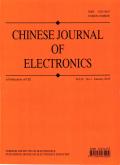用于舞蹈动作识别的动态拓扑推理图卷积网络
IF 3
4区 计算机科学
Q3 ENGINEERING, ELECTRICAL & ELECTRONIC
引用次数: 0
摘要
舞蹈动作识别作为人类动作识别的延伸,在舞蹈教育、娱乐、艺术保护、文化遗产保护等方面具有重要的应用前景。然而,由于舞蹈动作的多样性、高复杂性和执行中的个体差异,目前的人体动作识别方法在捕捉舞蹈动作丰富的几何和物理特征方面面临挑战。本文提出了一种用于舞蹈动作识别的动态拓扑推理图卷积网络(DTI-GNet)。首先,设计骨关节特征嵌入编码模块,推断动作执行过程中隐藏在空间结构和时间动态中的几何和物理特征,捕捉动作特定的骨关节依赖关系。其次,设计了一个时空动态拓扑编码模块,利用关节-骨的几何和物理特性,放松了固定拓扑的限制,克服了刚性拓扑的层状图卷积层遇到的过平滑问题。最后,建立了基于动态拓扑推理的时空图卷积层作为构建DTI-GNet的基本单元,探索了节点间的共现特征和相互依赖关系。在MSDanceAction和InDanceAction两个舞蹈动作数据集上的实验结果证明了该方法对舞蹈动作识别的优越性。本文章由计算机程序翻译,如有差异,请以英文原文为准。
DTI-GNet: Dynamic Topology Inferenced Graph Convolution Network for Dance Action Recognition
As an extension of human action recognition, dance action recognition has been a significant research area with potential applications in dance education, entertainment, artistic protection, and cultural heritage preservation. However, the current human action recognition methods face challenges in capturing rich geometric and physical characteristics of dance actions due to their diversity, high complexity, and individual variation in execution. In this paper, a dynamic topology inferenced graph convolution network (DTI-GNet) is proposed for dance action recognition. First, a bone-joint features embedding encoding module is devised to infer the geometric and physical characteristics hidden in spatial structures and temporal dynamics during action performance, aiming to capture action-specific bone-joint dependencies. Second, a spatial-temporal dynamic topological encoding module is specifically designed to exploit joint-bone geometric and physical properties, relaxing the restrictions of the fixed topology and overcoming oversmoothing problems encountered by stracked graph convolution layer with rigid topology. Finally, a dynamic topology inferenced spatial-temporal graph convolution layer is developed as a fundamental unit to construct DTI-GNet, exploring the co-occurrence features and inter-dependencies between joints. Experimental results on two dance action datasets, MSDanceAction and InDanceAction, demonstrate the superiority of the proposed method for dance action recognition.
求助全文
通过发布文献求助,成功后即可免费获取论文全文。
去求助
来源期刊

Chinese Journal of Electronics
工程技术-工程:电子与电气
CiteScore
3.70
自引率
16.70%
发文量
342
审稿时长
12.0 months
期刊介绍:
CJE focuses on the emerging fields of electronics, publishing innovative and transformative research papers. Most of the papers published in CJE are from universities and research institutes, presenting their innovative research results. Both theoretical and practical contributions are encouraged, and original research papers reporting novel solutions to the hot topics in electronics are strongly recommended.
 求助内容:
求助内容: 应助结果提醒方式:
应助结果提醒方式:


